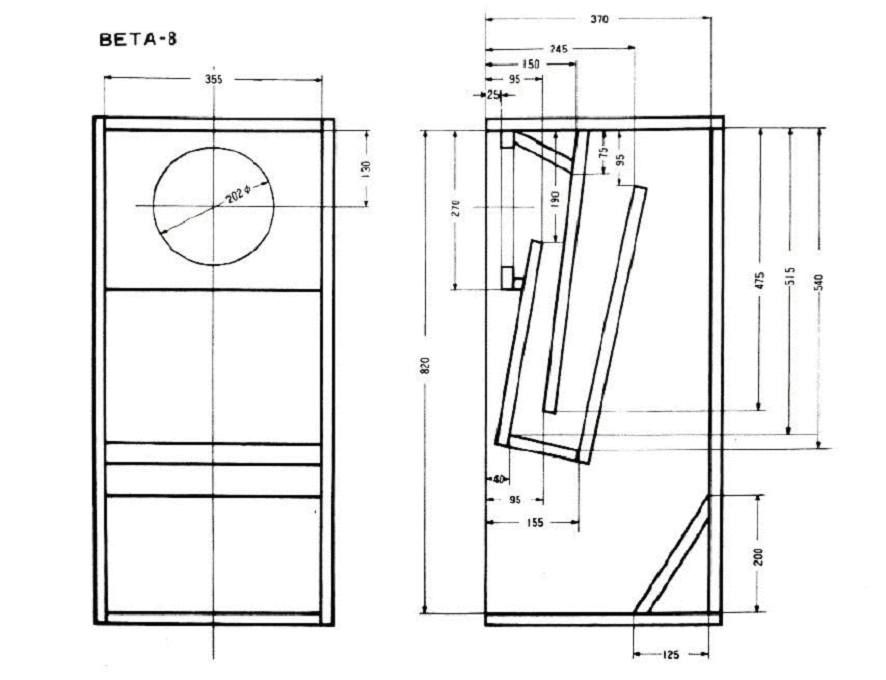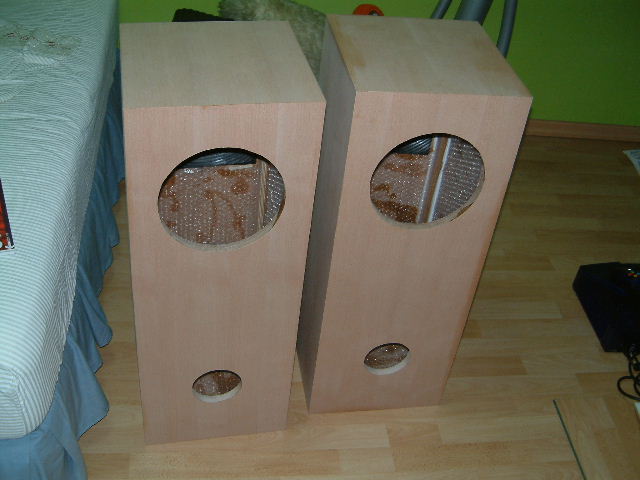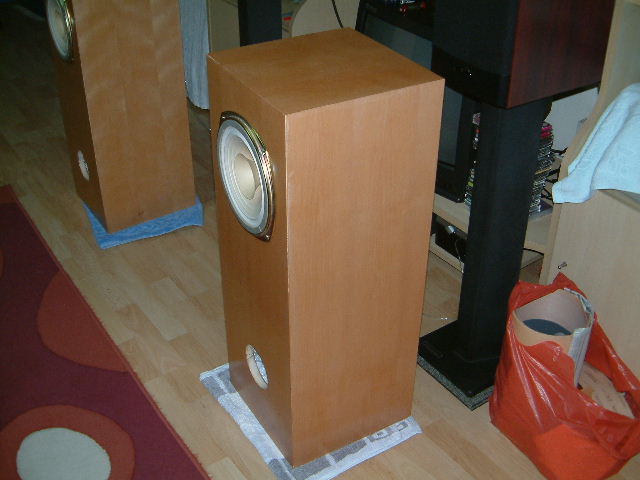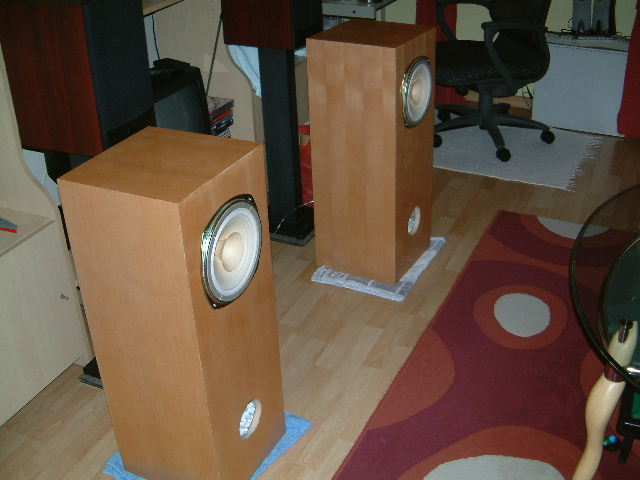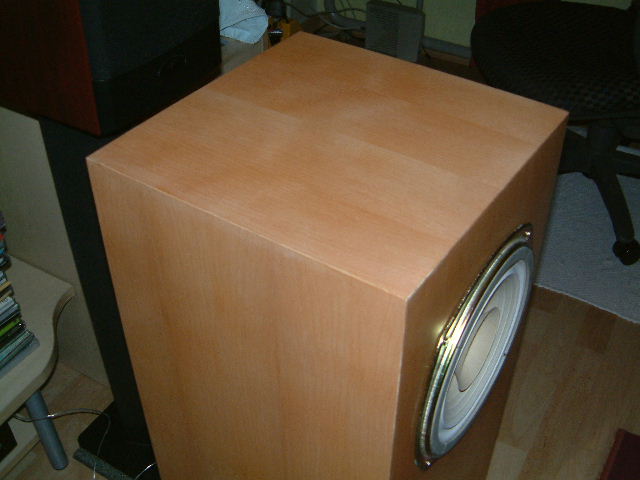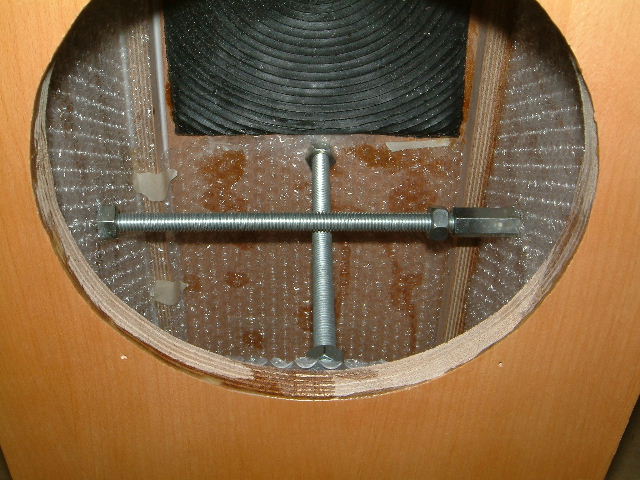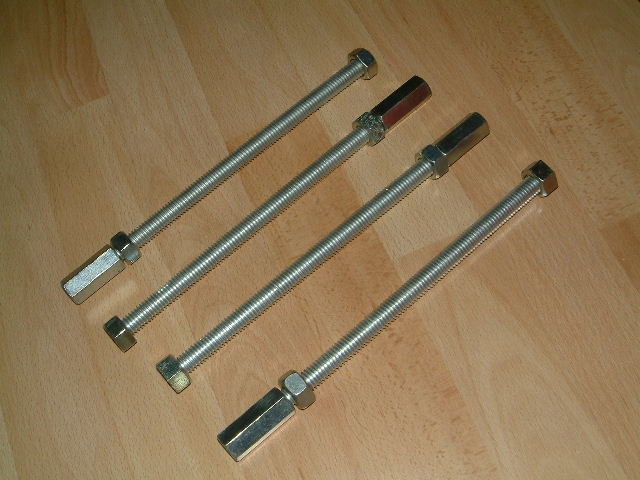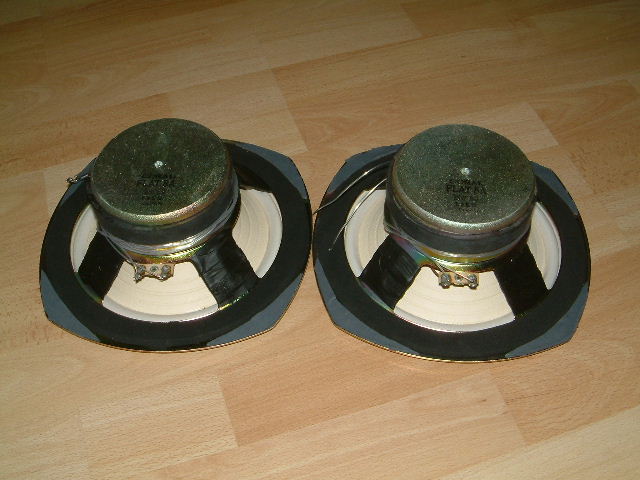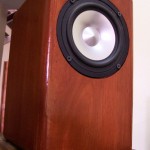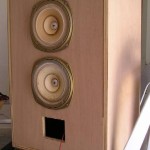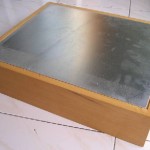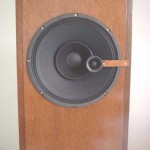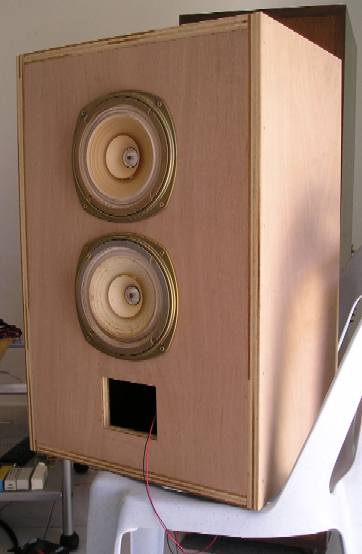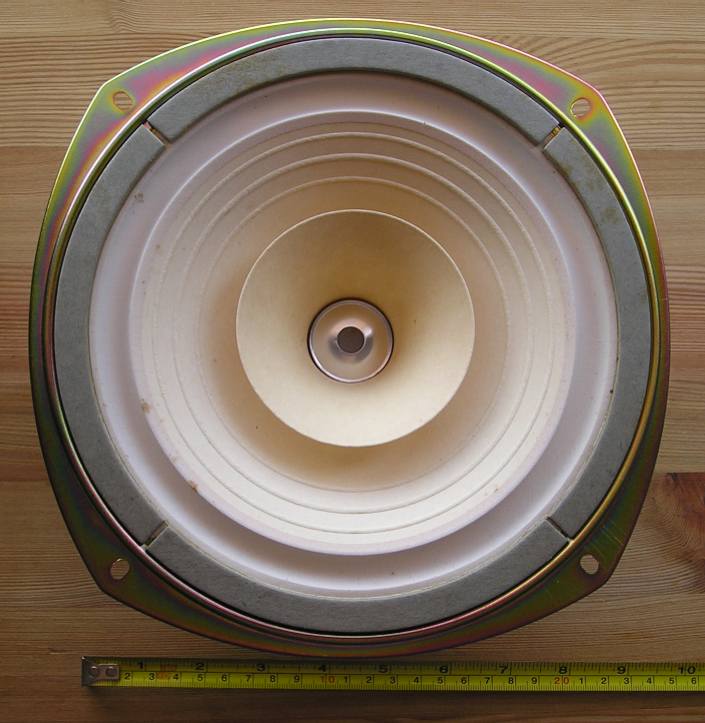Waily builds an enclosure for his Coral Flat 8s.
Waily goes Flat!
Boy oh boy, I haven’t heard from this guy for so long and suddenly he wrote this to me.
As always, great job Waily!
My Flat 8s Review
After gathering dust for months, and also my DIY desire has long been gone due to other commitments, I have since taken the initiative to finish this project. Err, actually being nagged by my wife, “what’s the two driver doing in the room…is it a new kind of home decor??” Alright, in fact, this question always ponders upon me: “What design shall I house this driver in???” I doubt that all the lucky $%^&*&* that got this driver from Yeo will have the same thought and are waiting for someone to step out and say, “GUYS this is the best enclosure for the driver and matches the exact T/S parameter and so on…….”. Then we just follow that design as to play safe… Well, very good and smart move. I am one of them as well patiently lurking and waiting for any Diyer to finish up and give some review for this driver/ enclosure. The East Marine Drive site do have the most information of any Coral drivers on Earth but unfortunately not much data on the Flat 8s series. Yes, I have a success in waiting but nothing more. Guess I have to move on, and now no more waiting….
Well the easiest way out is to follow the recommended enclosure of Beta 8 as the T/S parameter is quite similar to the Beta series so it is supposed to sound good. Nah, I am bored living with bookshelf’s and I want something BIGGER, I need to make a decision to select which enclosure from Yeo’s site, a bass reflex bookshelf, the old Danish hifi mag in the 70s bass reflex, taller box design or the ever good looking and supposedly to be the better sounding of all, the backloaded horn cabinet. Oh, yeah.. I definitely picked the more macho design, aka the backloaded horn design as I want the best enclosure for this precious baby. Needless to say I have no whatever experience on woodworking so the cutting of planks/plywood will have to pass to the carpenter/ wood supplier shop. Oh yeah, I want to use the best plywood material for the cabinet too, the 3/4″ Marine Grade plywood. Immediately with this design, I measured and drew out all the required tapered angled parts using ACAD, and with all the proper printed drawing showing each panel for accurate cutting process, I and my friend rushed to the carpenter shop and asked the boss to cut accordingly, and in my mind I’ve already started to plan how to join and glue the backloaded horn enclosure. What the HECK!! while the boss is squinting at the drawing, he is saying out very loudly in their ever noisy and dusty shop, “Friend, We here no cut Angle one, U want, we can cut all the straight part and you angle/ tapered yourself”… What cut the tapered parts by myself??? No way man…I got zero experience doing anything with wood. Bump, speechless, all my hopes are dashed……
Oh god, after spending days to calculate all those angle/ degree of those joints, now he tell me that they won’t do the angle/ apered portion .And when asked how to cut those tapered portion, he recommend me to get some tools for the job, which I totally do not have any confidence in doing that.. Damn sucks, but I suddenly realized that I do have on hand, the supposedly 70s Danish design enclosure sketches with me, and that is what my review is:-)..
Yep, this is the ENCLOSURE that I am going to start with and also I intend to play with it first until I find any other method or shops that can do those cutting for me. Err, that means the backloaded project have to KIV. Not all is bad, well, as for the start, it is much cheaper too and easier to build, so what the heck, since I am there, I quickly calculate out the required pcs of plywood and ask the boss to proceed (2 set total as one for my friend too). Also I’ve added 8 pcs. of 1″ strips to ensure that I will have some sort of additional bracing, actually it will help to maintain a easier matching/ joining of the four sides of joint. The other day, we have dragged those stupid heavy marine plywood home and nearly ended up lying flat on the ground as I warned anyone now, those marine plywood is really HEAVY, and when I said marine plywood, take note that it must have about 12 layer of densely packed plywood and a rubber stamp something like BS1088 printed on it. There is another type of marine ply, but much lesser layer and lighter, cheaper too. Do check properly.
First I got all the G-clamps ready, white glue, screws and I find this is the most easiest process to complete. Just try to maintain the flatness at each joint before any screwing and gluing with the help of the clamps. In fact it is done in 4 hours with the cabinet starts standing on its own. Then followed by sanding off any high points and to ensure total flatness at all joints. Make sure you have sandpaper and woodblock to sand it flatly and no freehand sanding here:-).. After sanding it flat, it’s time to enjoy or test the driver in its raw enclosure. In fact this driver has been residing INSIDE this unfinished enclosure for two long months before I started to finish it, and the reasons is, it sounds GOOD! Well, one must enjoy the fruit of hard labour first, ha-ha.., I mean the sound with this enclosure is already ahead from my some well known branded bookshelf speaker with f%$%^x driver in it..(guess the brand..ha-ha). With the raw enclosure I experienced with a lot of damping material that you can name: thin towel, pillow stuffing type, aquarium filter, and etc.. IMHO they can’t beat the ever cheapo bubble wrapper used heavily in the Super 12 Hammer Dynamics speaker design. Thanks Yeo, once I’ve read up your journey with the Super 12, the result is so good that, you may not believe it. Also I’d add in those packing peanuts too at the bottom of the box, (recommended for Super 12 design) Results, the bass is more tightened and pronounced! After going through some recommendations for the Hammer driver enclosure, I’ve bought the Deflex panel and try it out, AND Mama Mia!! This product is no snake oil and worth every single cent you spend on it. Try google it and you will find what is the advantage this deflex panel can gives. And for me, it definitely will stay in the enclosure to handle the ever problematic driver backwaves:-). I am wondering what will happen if the hole enclosure is being glued with this Deflex panel, well I am definitely no richman’s son, so have to carry on with my pathetic journey….only with 2 pcs at the back of the drivers.
Gosh, I nearly forgot to carry on completing the cabinet as I am too busy listening to it after months, and finally I say to myself “Ok, that’s it, Make a good looking enclosure for these babies”, soon after that the drivers is out, and below my veneering comes in. Then I start to patch up all the holes/ gaps with filler, sand flat before the veneering job. Some pics on the veneering… and the deflex panel nicely glued behind the driver.
As for the veneering process, it is a TRULY horror experience that I suggest that anyone that do not have any experience with it, better leave the job to the carpenter. WHY? If you like the smell of the contact cement (that some folks use it for certain kind of “enjoyment”), the strange look of your wife, relatives that stares at you, and once you start applying it, tearing off the expensive veneer when something is not right (blistering, paste wrongly, bubble, unevenness), sand off any excess veneer glue, cutting that splinter the veneer and etc, do go ahead, mess with the glue and stick every place on the floor, hand, etc..
I managed to finish the veneering for the cabinet after the painful experience, also nearly suffocated by the glue. And next, I made another terrible decision, thought that I can make it shine like the Steinway and Sons piano…finishing…Well dream on….Hence another few weeks of applying lacquer then sanding off the coating and applying lacquer again. To be frank I’ve lost count of how many layer of coating I’ve brushed in, as I seem to sand off too much of lacquer when I try to achieve a flat mirror finish. Well weeks past, I’ve finally lost interest of getting the perfect mirror finish, and here is my creation of stupid intention. He-he, in fact some portion of the cabinet attained the mirror finish status, I would say maybe only 5% of the total lacquered area. The rest of the finishing, well from far, it looks OK, but when at near, : (
Pics of the piano finished wannabes, using Gainclones to try out…Sound delicious, slurpp..
And now come the fun part, tweaking. I’ve listened to one pair of the driver housed in something same size as this but with different port design. The dust cap is being painfully removed as the owner says that, it helps in the highs and makes it sings livelier. Ouch! I don’t have the guts to cut off the dust cap as one mistake, the precious one might be gone forever and I don’t think I can find any more replacement except Yeo may be hiding some stocks for safe keeping:-)…But when I listened to this driver OB, I don’t feel any missing highs, but now in the enclosure, the highs are really somehow bit missing. Then I am thinking of a simple theory, let’s talk about the construction of a drum. In order for the drum to sound crisp and clear, the skin must be pulled very tight. Else with a fluffy skin, you cannot expect it to sound sharp. Hence this comes to my mind automatically, I need more bracing to strengthen the front and side board for the cabinet. Here are the pics for what I’ve implemented, fully adjustable hand tightened screw thread lock and nut. Note: all the thread lock is hand tightened only to ensure it doesn’t rip the cabinet apart:-).
My second tweak is to mount the driver as tightly as possible to the cabinet. A very simple method is by sealing tight the driver with some hard sponge tape all around the driver mounting face. I’ve also damped the basket spider by using some sort of stretchable tape wrapping all round the thin basket metal just trying to reduce the ringing effect. (Beta 8 users, no need to do this as the material is made from another world:-))
After the tweaking, immediately I’ve noticed the improvement. Yes, those missing highs are back and even better than OB, the music has more focus without much coloration (less boxy sound). IMHO, it has saved me from removing the dust cap or adding any tweeters that I think will lead to more problem if not done right. (coloration of crossover components). Ok, someone might be interested in what speaker cable I am using, it is OCC 6N Single Solid core Silver 24AWG teflon coated that is soldered directly onto the terminal, hence there is no speaker terminal at the back of the cabinet, well aren’t this a purist move :-). Just kidding. In fact I am LAZY to cut another hole at at the back of the cabinet… You can get the speaker wire here, http://www.ahfartaudio.com/components/wires.html, well I don’t earn any commission for this, but do check his site for more interesting products. This wire really Rocks. Finally, I have shifted my creation into my bedroom as to enjoy orgasm every night, using the EL84pre, EL84PP power amp, CDPro transport, 1543 DAC SLA battery powered. Ha-ha all diyparadise stuffs, BRAVO Yeo!!! So my words to all those lucky #$%^&* with the Flat 8s or the Flat 6s driver, WHAT THE H*** R U WAITING for?? Letting the driver mouldy and self destruct?? Ahem, have a life……it cries to be housed in an enclosure that can simply satisfy all your ever needs in searching for the better sound. That’s all guys. Adios.
